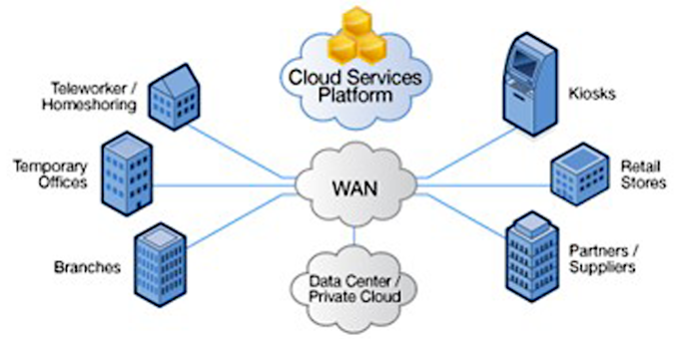Many businesses have more than one physical location and connecting each location to ERP, POS, Email and other services can be a complex task, but it doesn’t need to be. Every business relies on network connectivity to operate, so choosing the right Wide Area Network (WAN) connection type is crucial. A WAN connection allows businesses to connect geographically dispersed locations and enable seamless data communication. There are different types of WAN connections available in the market and selecting the right one can have a significant impact on a company’s bottom line.
Here are some of the most common WAN connection types:
- Metro Ethernet Connection (Leased Line) – A leased line connection is a dedicated, point-to-point connection that provides a fixed bandwidth between two or more locations. Leased lines are ideal for businesses that require high-speed, reliable connectivity and have high data transfer needs. The primary advantage of a leased line connection is that it provides a secure and private connection, making it an ideal choice for companies that deal with sensitive data.
- MPLS Connection – Multiprotocol Label Switching (MPLS) is a routing technique used in telecommunications networks to direct data from one network node to the next. An MPLS connection provides businesses with a private network, allowing them to connect their different locations securely. It is a popular choice for companies that require a reliable, high-speed connection, and need to prioritize network traffic based on specific applications or services.
- Virtual Private Network (VPN) Connection – A VPN connection is a secure way to connect different locations over the public internet. It provides businesses with a cost-effective and secure way to connect multiple locations, allowing remote workers to access the network from anywhere. A VPN connection is ideal for businesses that need to connect a small number of locations and have lower bandwidth requirements. Traditionally VPNs were managed in a firewall at each location creating an encrypted tunnel, but they are hard to manage because any changes require an IT manager to be onsite to configure the firewall at each location.
- Internet SD WAN Connection – An Internet SD WAN connection is similar to a VPN connection but uses the public internet to connect different locations and relies on a gateway controller in the cloud that can be managed remotely. Branch office locations require an SD WAN box which talks to the gateway controller but does not require local configuring because the routing and encryption is all software defined and the routing decisions are in the cloud. It is a cost-effective way for businesses to connect remote workers and smaller offices to the corporate network. The primary advantage of an Internet VPN connection is that it is easy to set up and can be done quickly.
- Cellular Connection A cellular connection uses cellular networks to connect different locations. It is an ideal option for businesses that need to connect remote sites or locations that do not have access to traditional internet connections. Cellular connections are typically slower than other WAN connection types and have lower bandwidth capabilities.
When selecting a WAN connection type, businesses should consider their specific needs, such as bandwidth requirements, data transfer needs, and network security. Leased line connections are the most secure but can sometimes be the most expensive, while cellular connections are the least expensive but have limited bandwidth capabilities. MPLS and VPN connections provide a balance between security, bandwidth, and cost and are ideal for most businesses.
In conclusion, selecting the right WAN connection type is critical to ensuring efficient and reliable network connectivity for businesses. By understanding the different types of WAN connections available, companies can choose the right option to meet their specific requirements and optimize their network infrastructure.







